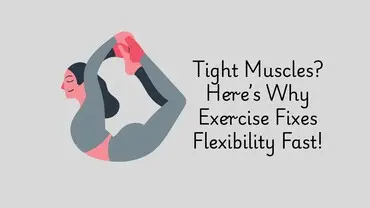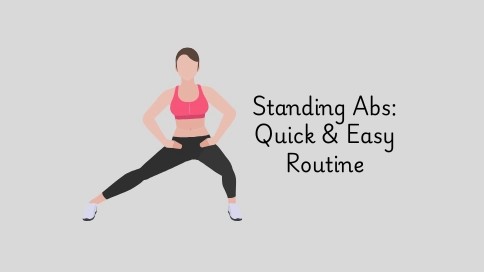Why Regular Exercise is the Best Way to Prevent Flexibility Issues
Flexibility is one of the most important yet overlooked aspects of health and fitness. You may not notice tight muscles or stiff joints during your everyday routine, but over time, reduced flexibility can lead to discomfort, poor posture, and even injury. The good news is that regular exercise can help maintain and improve flexibility at any age.
This article explains how exercise helps prevent flexibility problems, what types of exercises are best, and how you can build a routine that supports long-term mobility.
What is Flexibility and Why is it Important
Flexibility refers to the ability of your muscles and joints to move through their full range of motion. Good flexibility helps you move freely, stay balanced, and perform daily activities with ease. On the other hand, poor flexibility can make even simple tasks like bending, reaching, or standing for long periods uncomfortable or painful.
Some of the common consequences of limited flexibility include:
Joint stiffness
Muscle tightness
Increased risk of injury
Poor posture
Lower back pain
Reduced range of motion
Maintaining flexibility is essential for people of all ages, especially those who sit for long hours, do repetitive tasks, or are recovering from injury.
How Regular Exercise Helps Prevent Flexibility Issues
Improves Joint Mobility
Exercise increases movement in your joints, helping to keep them well-lubricated. This reduces friction and stiffness, allowing for smooth and pain-free motion.
Strengthens and Elongates Muscles
When you engage in strength training or bodyweight exercises, your muscles are stretched and strengthened at the same time. This helps maintain length in the muscles, which prevents them from tightening or shortening over time.
Boosts Blood Flow
Physical activity promotes better circulation. Improved blood flow delivers oxygen and nutrients to your muscles, which supports recovery, reduces soreness, and prevents muscle stiffness.
Reduces Muscle Tension
Stretching and mobility exercises ease tight muscles and prevent spasms. Doing these regularly ensures that your muscles stay relaxed and flexible.
Supports Better Posture
A major cause of tight muscles is poor posture. Exercises like planks, back extensions, and core work help align the body correctly, reducing strain on muscles and joints.
Enhances Mind-Muscle Coordination
Regular movement trains your brain and body to work together more efficiently. This neuromuscular coordination improves balance, reaction time, and flexibility.
Best Types of Exercises for Flexibility
Not every type of exercise targets flexibility directly. However, combining a variety of movements can give you the best results.
Dynamic Stretching
Dynamic stretches are active movements that stretch the muscles to their full range without holding the position. These are ideal before workouts. Examples include leg swings, arm circles, and walking lunges.
Static Stretching
Static stretches are held for 20 to 30 seconds and are best done after your workout. These help muscles return to their normal length and reduce post-exercise soreness.
Yoga
Yoga combines breath control, flexibility, and strength. It is ideal for improving mobility in the hips, spine, shoulders, and legs.
Pilates
Pilates focuses on core strength and slow, controlled movements. It increases body awareness and improves both stability and flexibility.
Foam Rolling
Also known as self-myofascial release, foam rolling helps loosen tight muscles and fascia, increasing flexibility and range of motion.
Functional Training
This involves exercises that mimic everyday movements such as squatting, reaching, or lifting. These improve flexibility in a way that translates to daily life.
How Often Should You Exercise for Flexibility
Flexibility is not something that can be improved overnight. However, with a consistent routine, results can come within weeks.
Aim for flexibility exercises at least three times per week.
Include 10 to 15 minutes of stretching after workouts.
Add yoga or Pilates to your routine once or twice a week.
Do light stretching daily, especially after long hours of sitting.
Consistency is key. A small amount of regular practice is more effective than occasional long sessions.
Benefits of Maintaining Flexibility Through Exercise
Better Performance in Daily Activities
Good flexibility allows you to perform everyday tasks like bending, lifting, and climbing stairs with ease.
Reduced Risk of Injury
Tight muscles are more prone to tearing and strain. Keeping them flexible helps reduce the likelihood of injury.
Improved Balance and Coordination
When your muscles and joints work together smoothly, your ability to balance and react quickly improves.
Faster Recovery and Less Pain
Stretching reduces post-workout soreness and chronic tension in muscles, helping you recover faster.
Healthy Aging
As you age, joints naturally lose range of motion. Regular movement helps slow this process and keeps you independent longer.
Impact of Age and Inactivity on Flexibility
With age, flexibility decreases due to factors like reduced collagen in tissues, lower activity levels, and muscle loss. But a sedentary lifestyle accelerates this decline even more. The longer you stay inactive, the harder it becomes to move comfortably.
Incorporating regular exercise into your life—no matter your age—can reverse much of the damage caused by inactivity. Even starting in your forties, fifties, or sixties, you can significantly improve your flexibility with a consistent exercise plan.
Common Myths About Flexibility
I am too old to get flexible
Flexibility can be improved at any age. It may take more time as you age, but it is still possible.
Stretching is the only way to become flexible
While stretching helps, combining it with strength and mobility training is much more effective.
Cardio improves flexibility
Cardio improves endurance and heart health but does not directly impact flexibility unless combined with stretching and mobility work.
Tips for Getting Started
Always warm up before stretching to avoid injury.
Do not force your body into uncomfortable positions.
Hold each stretch for at least 20 seconds without bouncing.
Breathe deeply while stretching to relax your muscles.
Listen to your body. Mild discomfort is okay, but sharp pain is not.
Conclusion
Flexibility is essential for pain-free movement, good posture, and a healthy lifestyle. Regular exercise is the most effective way to prevent flexibility issues because it targets muscles, joints, and connective tissue in a balanced way. Whether you prefer yoga, Pilates, strength training, or walking, adding regular movement to your life will help you stay mobile and independent for years to come.
Make flexibility a daily priority, not just a fitness goal. Your future self will thank you.
FAQs Section
1. What exercises are best for increasing flexibility quickly
Yoga, dynamic stretching, and foam rolling are the most effective for fast improvement. Doing these regularly speeds up flexibility gains.
2. How long does it take to improve flexibility with exercise
Most people notice improvement within four to six weeks of consistent stretching and mobility training.
3. Can you improve flexibility after age forty
Yes, you can. With consistent effort, even older adults can regain and improve flexibility over time.
4. Is stretching enough to prevent flexibility problems
Stretching is helpful but should be combined with strength and mobility exercises for the best results.
5. What causes loss of flexibility over time
Aging, inactivity, poor posture, and muscle imbalances are the main reasons for reduced flexibility. Regular exercise helps combat all of these.






No comments yet. Be the first to comment!